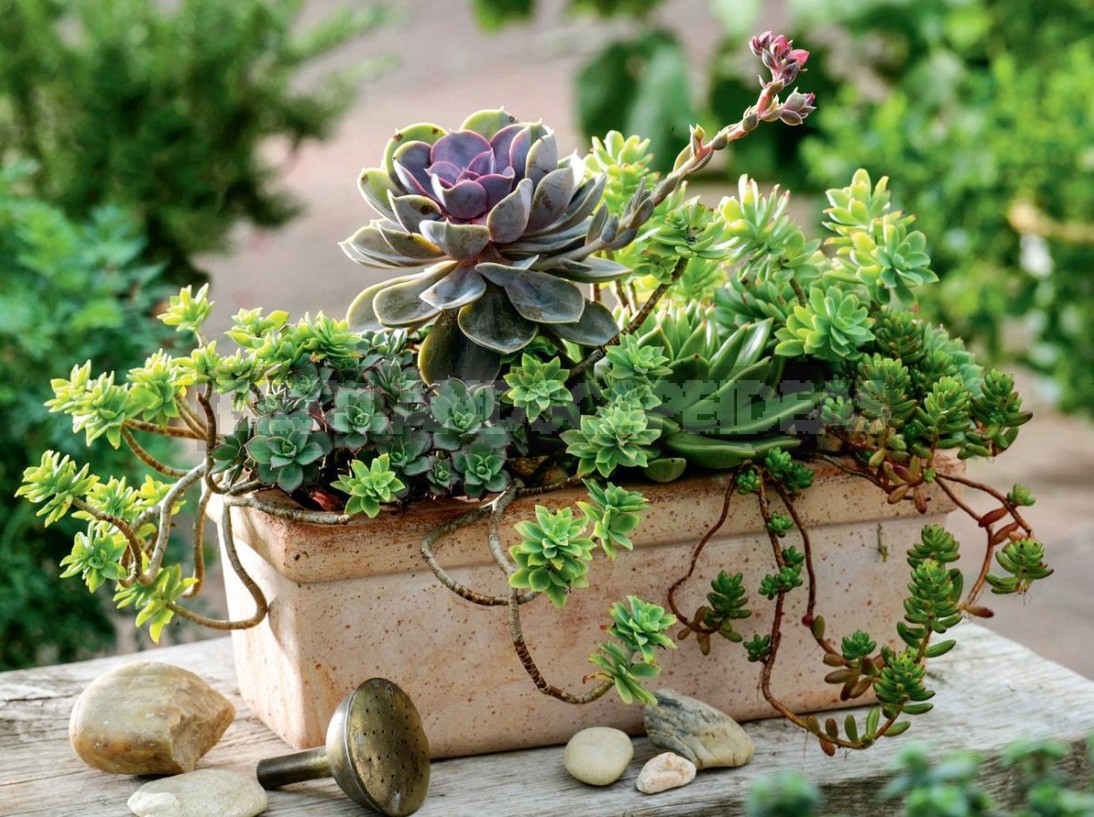
Succulents conquer with extraordinary external data, enviable vitality and unparalleled unpretentiousness. Get to know them better — and you will certainly find a corner for them both in the room and in your heart!
In a terracotta box, Echeveria and Aeonium arboreum look very organic. In the summer, the succulents company should provide a Sunny corner in the garden, and in the winter, the plants must be brought into the house.
It seems that this creature is from another planet: Aloe with fleshy leaves and stems is completely different from other representatives of the flora. This plant is part of a group called “succulents”, which comes from the Latin and translates as “juicy”. The fact that our heroes are able to accumulate moisture in the leaves and stems to safely survive prolonged droughts. This feature is due to the fact that succulents come from desert regions, where precipitation is very rare. No wonder they are so hardy and tenacious!
Pachyphytum oviferum is also called moonstone: its fleshy gray-blue leaves really resemble a polished semi-precious stone. In July and September, long flower stalks with white-pink bells appear from the lower rosettes.

Possessing an extraordinary look, boys look stunning in the compositions. Since most of them are tiny and differ significantly from each other, full-fledged mini-flower beds can only be created from members of this family, without attracting other plants to the company. Pots are suitable for the simplest — clay, galvanized or glass (for florarium). Especially advantageous look ensembles from different height species of these plants.
Ideas for compositions with succulents
1. Shabby chic is an interior design style that perfectly fits indoor plants that have passed strict face control. And who, if not succulents, can boast of a neat appearance all year round? Echeveria, Aloe, Opuntia, and Sedum in clay pots can be picturesquely grouped with other plants of a similar species, Packed in pull-out vintage boxes.

2. The perfect pair: while the aeonium shoots tend to go up, Echeveria creeps like a thick carpet. Although the succulent constantly forms new rosettes, it stays within the pot for a long time.
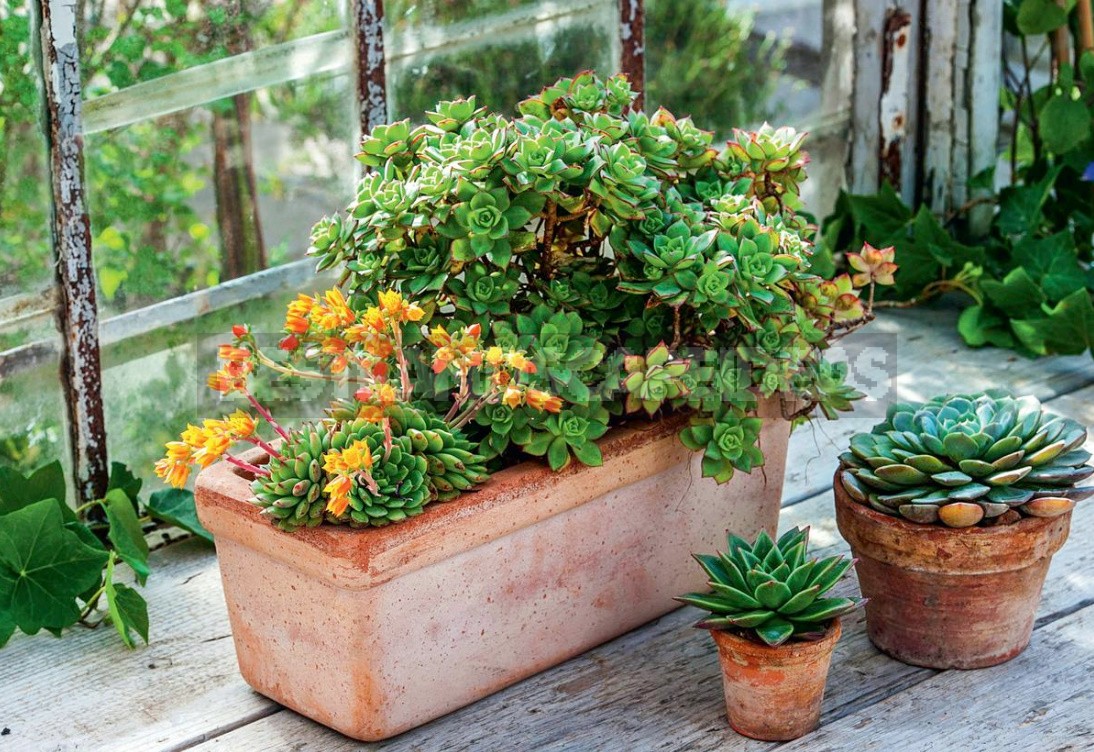
On a note. Want to surprise your guests? Use aeonium sockets when setting the table — such a lovely decor will not fade until they arrive.
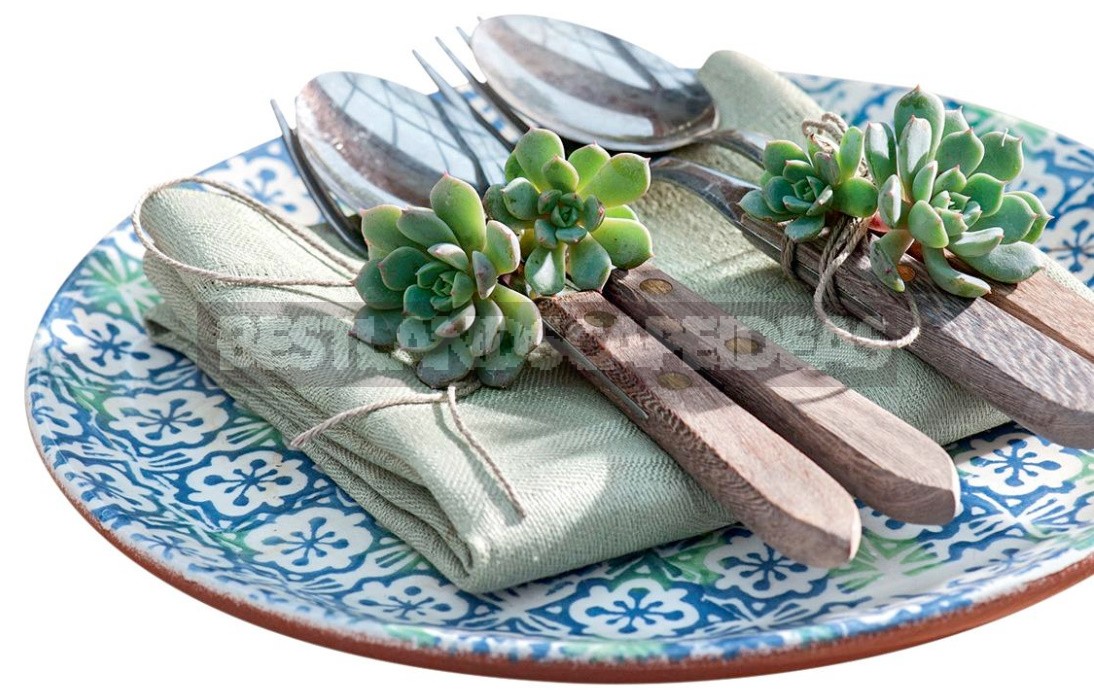
3. Sedum pachyclados grows rapidly and forms a dense carpet of rosettes. Blooms unusually-individual rosettes are pushed up, along the perimeter of which small white flowers soon appear.
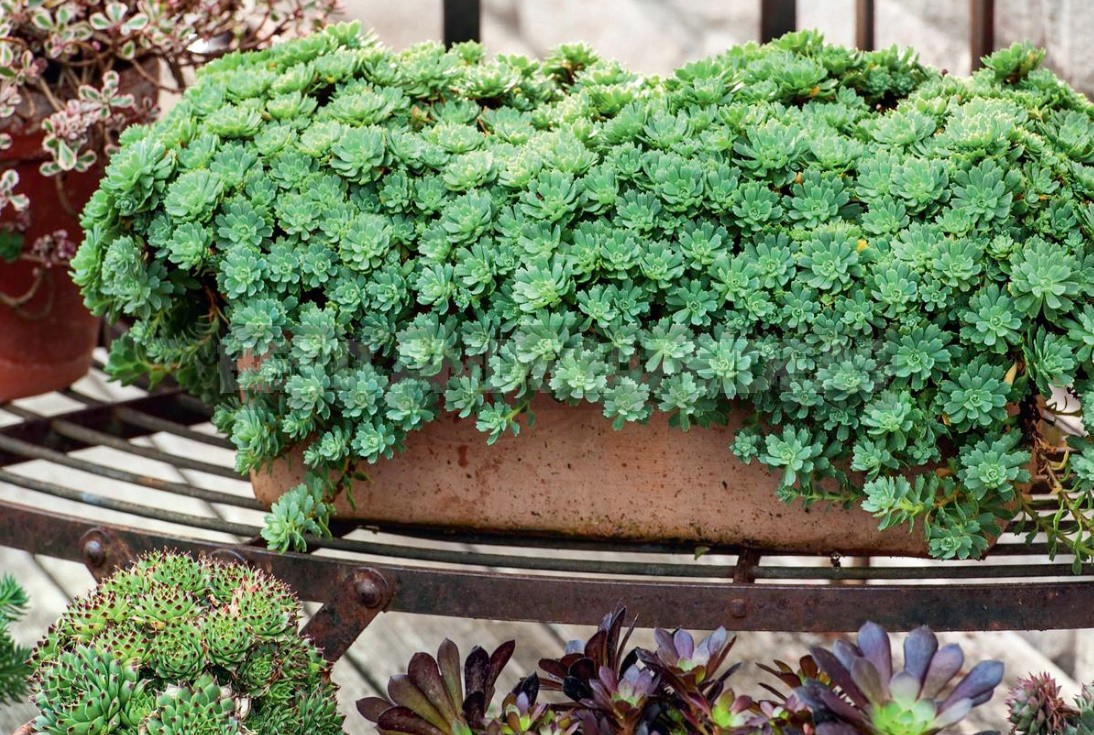
4. During flowering in March and April, Echeveria pulvinata ‘Doris Taylor’ produces numerous small bells of bright orange color. The peculiarity of the species is white pubescence on leaves and shoots. Important: when watering the plant, try not to get on the leaves, otherwise they will appear ugly spots.
5. Succulents look good in ensembles with other potted plants. However, keep in mind that they have different needs. The best solution in this case will be to plant the fatties in a separate pot, which can then be combined into a composition with other indoor counterparts – by digging in a large container.

6. But Senecio ‘Blue Finger’, Sedum spurium, Kalanchoe thyrsiflora, Helichrysum and Pennisetum alopecuroides ‘Little Bunny’ can be safely combined with each other, since the requirements of plants are the same.
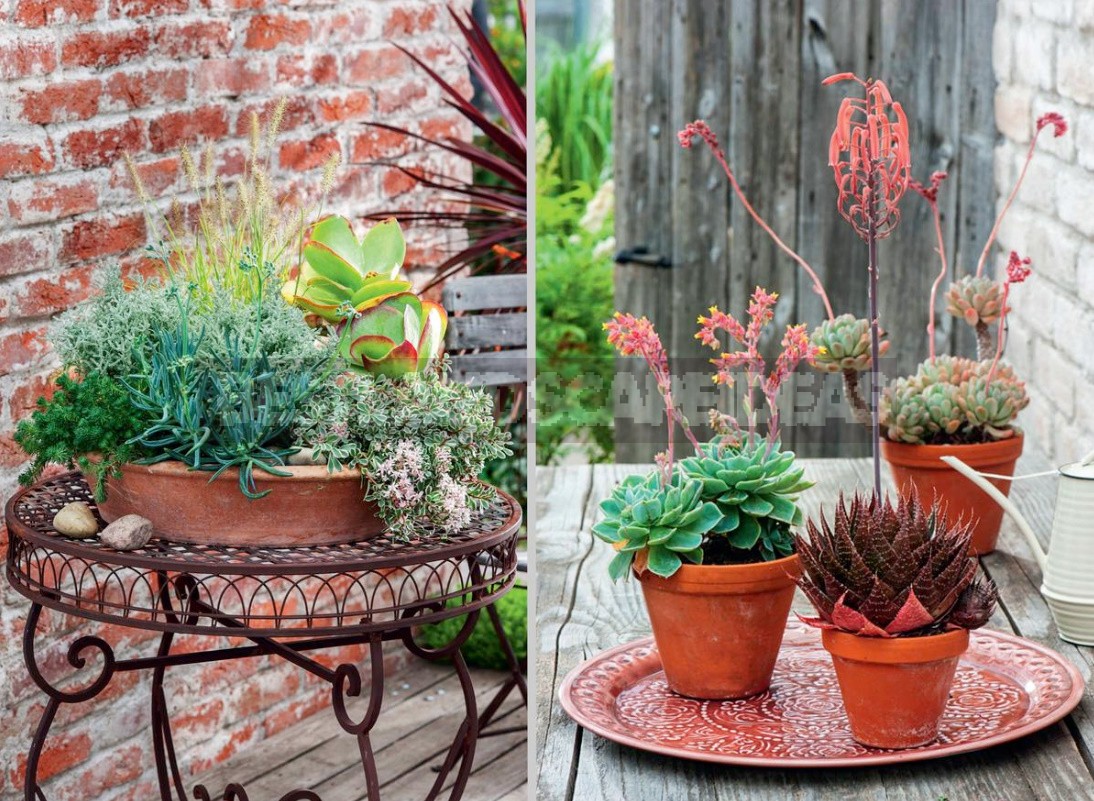
7. A harmonious trio — blue-green Echeveria derenbergii, Echeveria ‘Doris Taylor’ with leaves with red tips and Burgundy Aloe aristata effectively complement each other.
8. A florarium is a mini-greenhouse or glass container of any shape where a group of plants is planted. Since many succulents are small, they are perfect for implementing this idea.
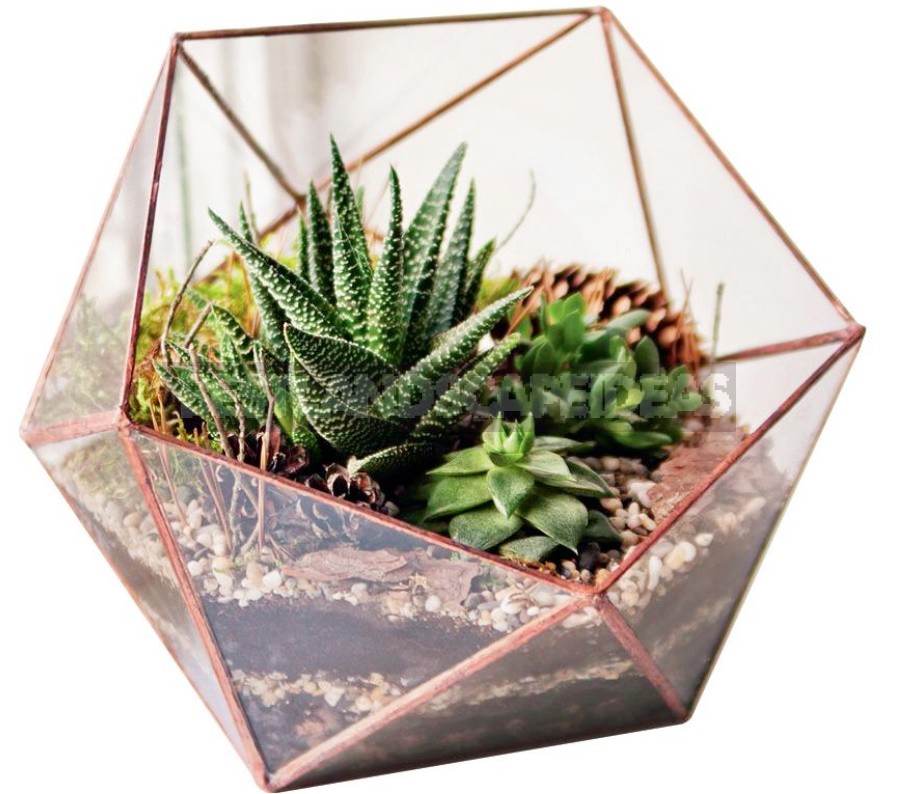
Important: “children of the desert” do not tolerate high humidity, so a container with a narrow neck is not suitable for a florarium with such plants — the microclimate in it is similar to a greenhouse.
9. Tableau. Since succulents are satisfied with a thin layer of substrate, you can create unusual patterns from plants.

For this:
- In a low box lined with film, pour the substrate, cover it with moss and pull a fine mesh.
- Now carefully plant succulents in the cells.
- At the end, nail the frame to the box-ready!
For watering, remove the craft from the wall and put it on a horizontal surface.
Important: watering should be moderate! The main enemy of succulents is excess moisture. They need a substrate with good water permeability, for which a drainage layer of expanded clay is made at the bottom of the container. The surface of the substrate is preferably mulched with gravel, so that the plant does not even touch the ground. Between waterings, the substrate must completely dry out, so in summer, it is enough to water green friends once a week, and in winter — twice a month.
Reproduction and care
Succulents are very easy to propagate. It is better to do this in spring and summer, because in autumn and winter the plants do not have enough light and they take root slowly. For reproduction, both the top of the shoot and a single leaf are suitable. At the same time, the cut must first be allowed to dry a little.
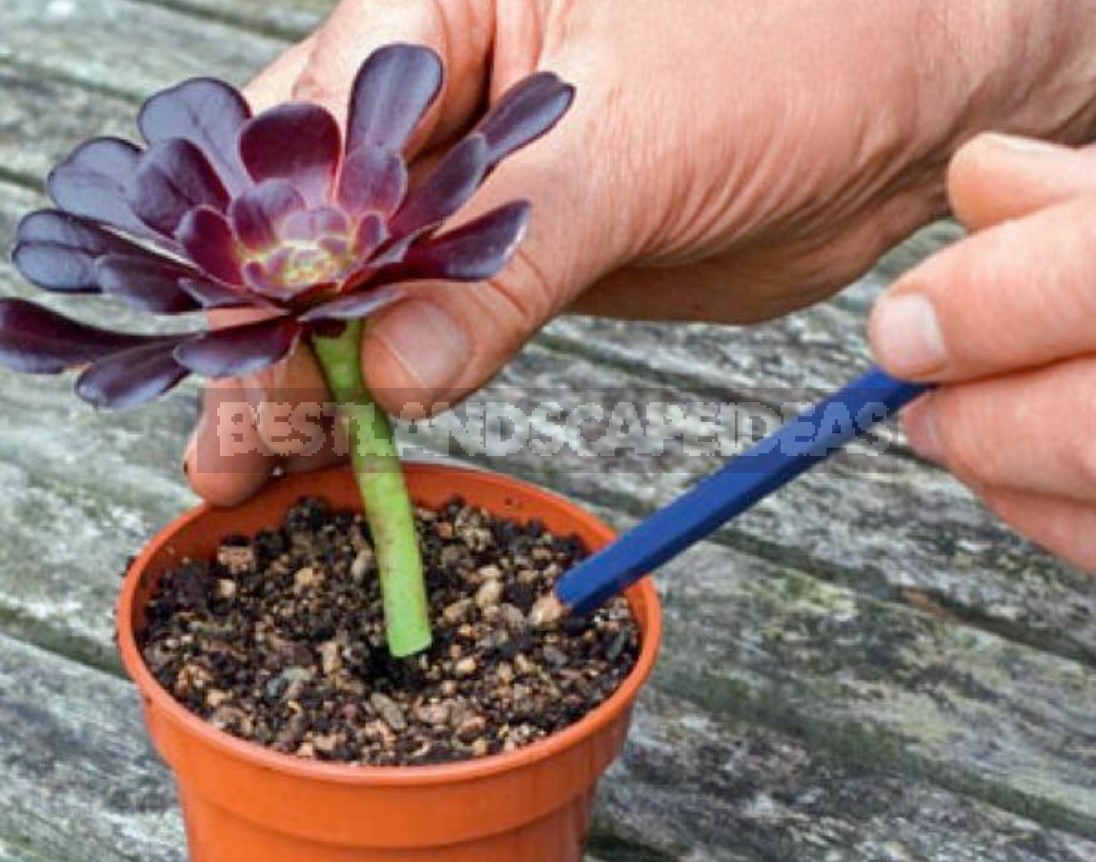
The substrate should only be slightly moistened (the planting material has enough moisture reserves to take root, so watering should be extremely moderate). Then put the pot in a shady corner. In a couple of weeks, a leaf or shoot will give roots. Important: you can not put shoots and leaves in the water — they will rot.
Another important point in growing succulents is that they all need sunlight, and the more the better. Without it, the plants stretch out and stop flowering, and the rosettes become loose and faded.
As for fertilizing, it is enough to make fertilizers for cacti 3-4 times in the spring and summer.
The plant itself will tell you the time when it needs to be transplanted: the leaves have become small — it’s time to move to a larger pot or divide.

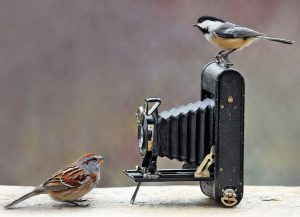
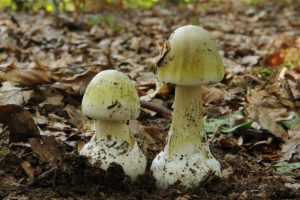

Leave a Reply